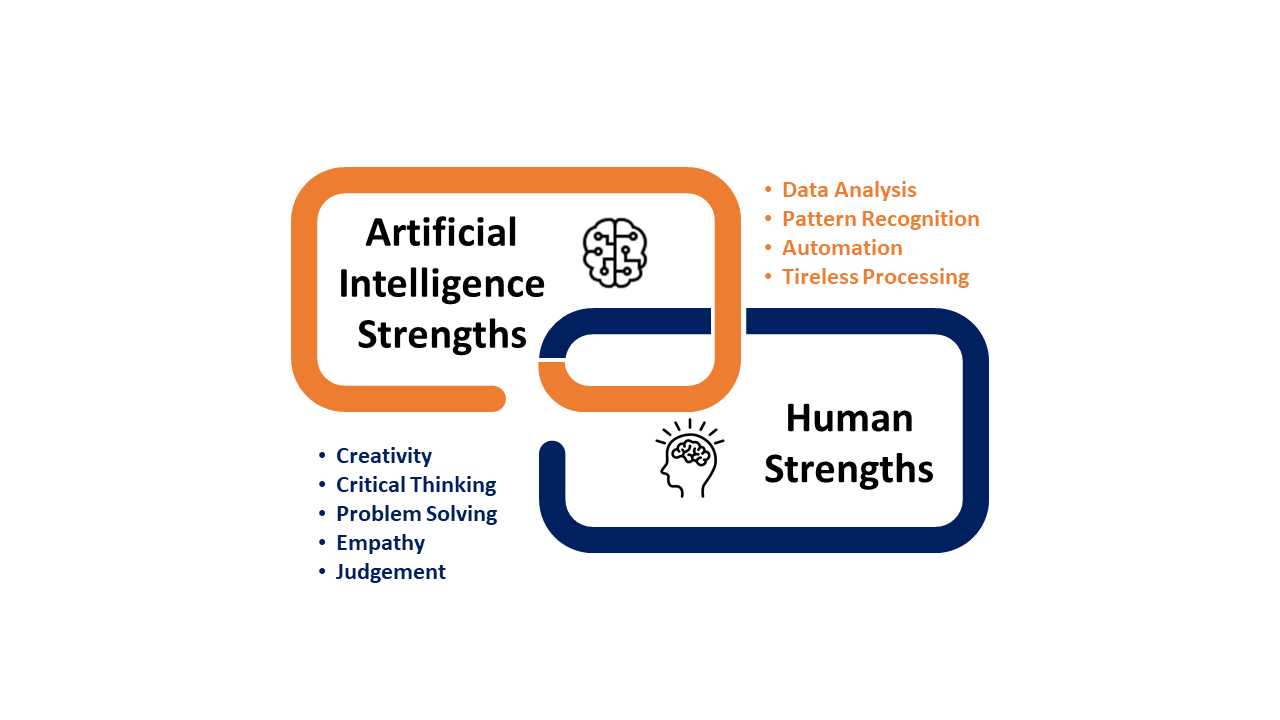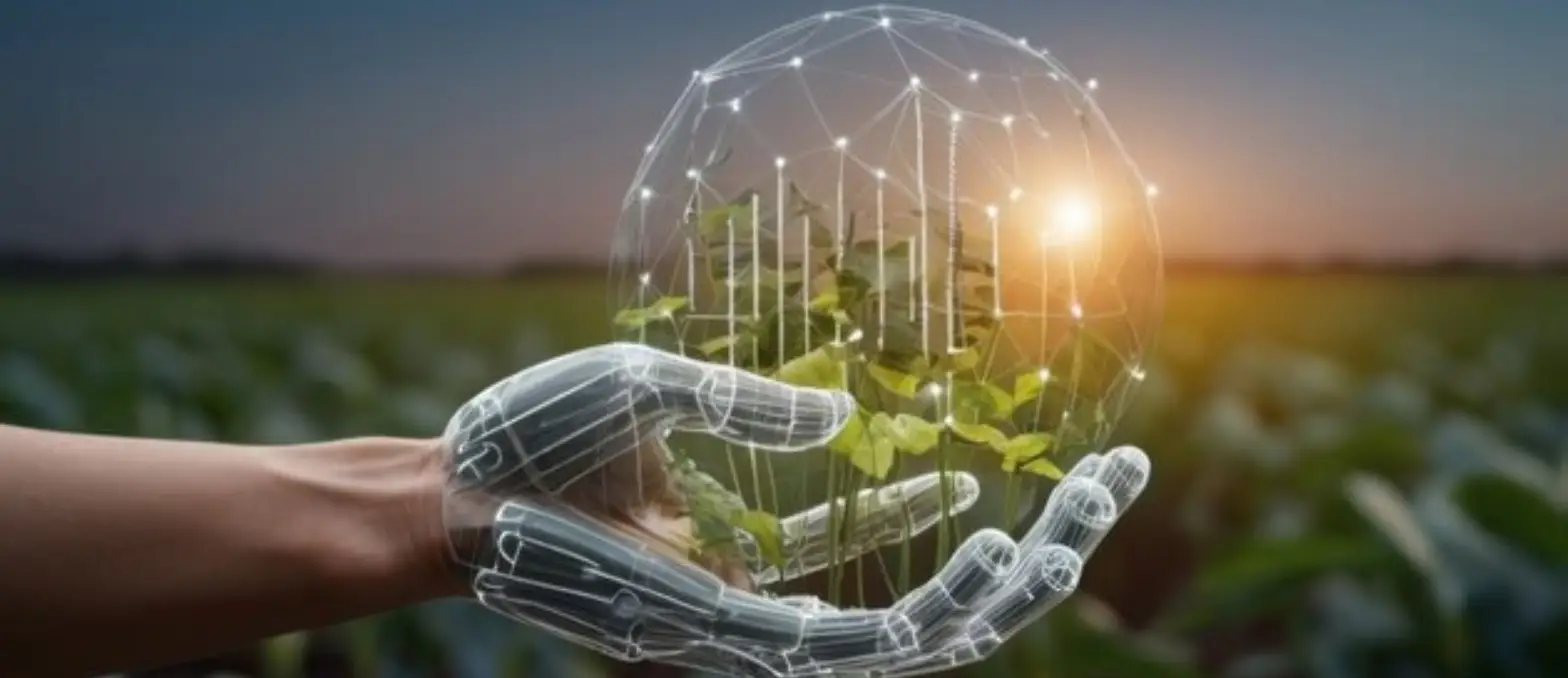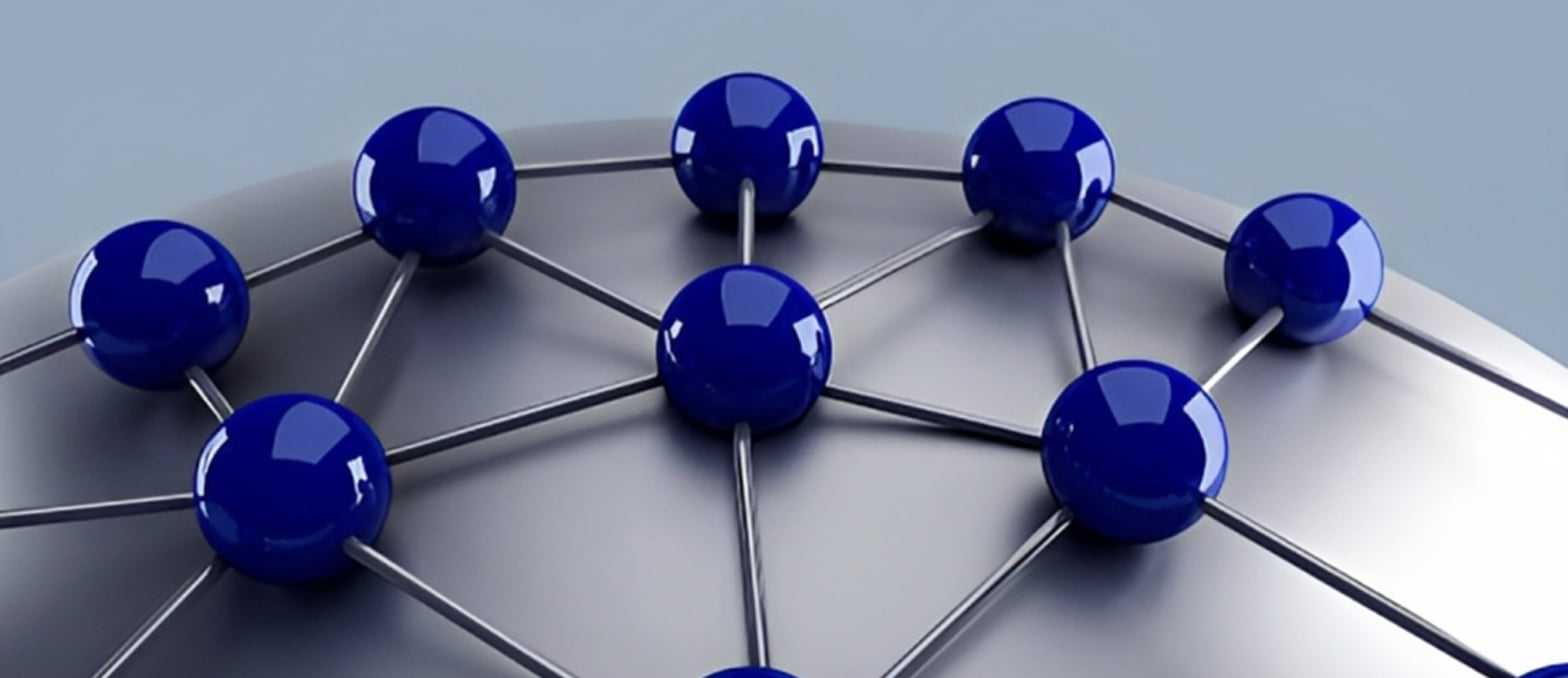Table of Contents
The convergence of human intelligence and artificial intelligence (AI) has resulted in an intriguing debate in the rapidly changing field of technology. AI and human intelligence each have special advantages, and their interaction has the power to revolutionize whole sectors of the economy and drive previously unheard-of innovation. The fascinating Human-AI collaboration will be examined in this blog, along with the enormous potential that results from their combined efforts. As per a study from Harvard Business Review,” the biggest performance improvements come when humans and smart machines work together, enhancing each other’s strengths“.
The use of AI by businesses to increase production and efficiency raises concerns about what place humans will have in this new era. The future of employment will focus on promoting human-AI collaboration rather than on replacing humans with machines. This blog will discuss how artificial intelligence services can revolutionize the workplace and how companies may use this partnership to foster creativity, innovation, and financial success.
Understanding Human Intuition and Artificial Intelligence
Investigating how artificial intelligence (AI) and human intelligence combine to enhance collective intelligence opens the door to creative solutions that go beyond individual capacities. Through cooperative problem-solving and the utilization of varied viewpoints, this partnership creates opportunities that were previously unachievable.
The Human-AI collaboration represents a significant advancement in our capacity to address intricate problems. Economic pressures demand proactive upskilling and adaptability, which calls for cooperation between HI and AI. However, as the general population begins to feel the effects of AI in the workplace and larger society, social anxiety is rising. The appropriate development of AI and its integration with human values are being called for.
According to psychologists, “HI is about recognizing the fundamental human need for connection and understanding, and using technology to reinforce, rather than displace, these qualities.” Many are wondering how to maintain the human aspect at the center of this process of fusion. While applications of AI aids in sorting through data and identifying patterns, human intellect—with its breadth of comprehension and insight—directs these capabilities toward significant and creative solutions.
Amplify Your Expertise With Our AI Solutions
Why is Human Intuition Important?
The term “human intelligence” describes the mental and cognitive capacities that enable people to reason, think, learn, adapt, and solve issues. It is a multifaceted phenomenon that includes a broad spectrum of mental talents, both innate and learned via education and experience. Three essential functions are needed for humans to play-
- They have to teach machines how to do certain jobs
- Explain the consequences of those activities, particularly if they seem illogical or controversial
- Continue to utilize machines responsibly (by keeping, for instance, robots from hurting people).
1. Logical Thinking and Solving
People are capable of critical thought and problem-solving in difficult situations. This calls for the capacity for data analysis, reasoned conclusion-making, and decision-making. Human intelligence enables people to think creatively and abstractly, which empowers them to take on new tasks.
2. Acquiring Knowledge and Adaptation
Human intelligence is characterized by its capacity to learn and gain new abilities and information. People can pick up knowledge through observation, instruction, and experience. Furthermore, human intelligence enables people to adjust to novel settings and events by making sense of them using what they already know.
3. Personalization
Delivering personalized brand experiences to consumers is the ultimate goal of AI in marketing. AI has made it possible to personalize products on such a large scale and with previously unthinkable precision. Humans do what they do best—using their intuition and judgment to make recommendations or choose the best option from a range of options—while AI technology does what it does best—sorting through and processing massive volumes of data to recommend specific products or actions.
4. Communication and Language
The capacity to communicate through complicated language is a special ability of humans.
This includes having a strong hold on both written and spoken language and also the ability to communicate ideas and concepts clearly in written and spoken forms. One of the basic instruments of human intelligence is language which enables people to communicate and collaborate with one another and knowledge transfer.
5. Consciousness and Self-awareness
Human intelligence consists of two things- consciousness and self-awareness. We are capable of introspecting, self-reflecting, and self-evaluating our thoughts and actions. The ability to make moral and ethical decisions calls for this awareness.
6. Moral and Ethical Decision-Making Ability
Moral and ethical thinking is a part of human intellect. People can make morally based decisions and think of the consequences that their choices will have on themselves and others. The human intellect can develop over time through learning, experiences, and exposure to various concepts and issues. This is a dynamic trait of human nature.
The Strength of Artificial Intelligence
With further developments, artificial intelligence is now capable of performing many “human” tasks, like customer service automation, illness diagnosis, and language translation. The global AI market is worth $196.63 billion. That’s an increase of $60 billion since 2022. This is giving rise to legitimate concerns that AI will eventually supplant human labor across the board in the economy. However, that isn’t the most likely or even the inevitable result. An artificial intelligence development company has never been more attentive to us or to us to our tools. Artificial intelligence (AI) will effectively modify who does work and how it is carried out, even though it will mostly complement human abilities instead of fully replacing them.
In three ways, intelligent machines are enabling people to reach new heights-
- Enhance our cognitive prowess
- Engage with client’s staff to free us up for more complex jobs
- Take on human abilities to increase our physical capabilities.
1. Machine learning (AI)
The goal of machine learning services, a branch of artificial intelligence, is to create algorithms that let computers learn from data. To do this, algorithms must be trained on huge datasets to identify patterns and provide predictions or judgments without explicit programming. Reinforcement learning, supervised learning, and unsupervised learning are common machine learning solutions.
2. Deep Learning
Deep learning technology is a kind of machine learning that models and processes complex data using artificial neural networks. It has performed very well on tasks like speech and picture recognition. Deep learning models such as recurrent neural networks (RNNs) and convolutional neural networks (CNNs) have demonstrated remarkable performance in a wide range of applications.
3. NLP, or natural language processing
NLP is the area of artificial intelligence that studies how language is used by computers. It makes it possible for machines to produce, comprehend, and interpret human language. Among its many uses, natural language processing services (NLP) enable chatbots, sentiment analysis, language translation, and text summarization.
4. Image Processing
The creation of algorithms and systems for computer vision enables the interpretation and comprehension of visual data from the outside world, including pictures and movies. Apps like object identification, facial recognition, and driverless cars depend on this.
5. Robotics
Robotics relies on artificial intelligence because it enables robots to sense their environment, make decisions, and execute manual operations. Robots are employed in various industries, including healthcare, and space exploration.
In recent years, artificial intelligence has advanced quickly and found practical uses. It is utilized in a wide range of applications, including self-driving cars, fraud detection, medical diagnostics, recommendation engines like Netflix and Amazon, and virtual voice assistants like Siri and Alexa.
Collaboration and Amplification through Human-AI Synergy
When artificial intelligence delivers the appropriate information at the appropriate moment, it can improve human analytical and decision-making skills. Also, it can boost originality.
- Think about how Autodesk’s Dreamcatcher AI helps even the most talented designers to be more imaginative. Dreamcatcher receives specifications from a designer regarding the ideal product, such as a chair that can hold up to 300 pounds, has a seat that is 18 inches from the ground, is constructed of materials that don’t cost more than $75, and so forth. She can also provide details on other chairs that catch her eye. Thousands of designs that fit those parameters are then generated by Dreamcatcher, frequently inspiring concepts the designer may not have thought of at first. After that, she can direct the software by telling it which seats she loves and dislikes, which will produce a fresh set of designs.
- Dreamcatcher makes all of the numerous computations required to make sure that every design that is suggested satisfies the requirements during the iterative process. This gives the designer more time to focus on using their special talents as humans—their artistic sensibilities and professional judgment.
Human-AI collaboration helps businesses engage with staff and clients in new and more efficient ways
- Artificial intelligence (AI) agents, such as Cortana, can, for instance, assist in communication between individuals or on their behalf. For instance, they can record meetings and provide those who were unable to attend with a voice-searchable transcript. These applications are naturally scalable; for example, a single AI chatbot can serve a huge number of users at once, wherever they may be, by offering standard customer support.
- Take Cortana, Microsoft’s AI personal assistant. It took a lot of training for the bot to become the ideal personality—confident, kind, and helpful without being overbearing. It required numerous hours for a team consisting of a dramatist, writer, and poet to instill those attributes. Similarly, human trainers were required to mold the personas of
- Amazon’s large language models Alexa and Apple’s Siri faithfully represent their respective companies’ brands. For instance, Siri has a hint of sassiness, as one could expect from Apple.
AI or Human Intuition?
Since both human and artificial intelligence (AI) have advantages and disadvantages, it would be wrong to suggest that one is better compared to the other. They can collaborate in many ways and achieve various goals. It’s incredibly helpful for things like weather forecasting, movie recommendation recommendations, and even medical picture analysis for physicians. But unlike humans, artificial intelligence lacks emotional intelligence, personal experience, and creative thought.
On the contrary, human intelligence excels in creative problem-solving, emotional intelligence, and empathy in difficult situations. We can create art, compose lovely poems, and forge meaningful connections. Given their differences, artificial intelligence (AI) cannot truly “take over” human intelligence.
Rather, it’s more likely that humans and artificial intelligence will collaborate more in the future. LLM development can make life easier by assisting us with jobs that need a lot of data or computations. People can concentrate on tasks that call for sophisticated decision-making, emotional intelligence, and inventiveness.

Real-World Applications
Human-AI collaboration is successful in several fields, including healthcare, finance, manufacturing, retail, and education. The list below includes a few of these applications.
# Innovation and Effectiveness
Working together, human-AI collaboration can improve human capacity for large-scale data analysis and fast decision-making. Additionally, it can foster creativity.
For instance, Project Scribbler from Adobe is an AI tool that helps with visual creation. After analyzing preliminary sketches, it produces alternate design possibilities with various elements and styles. Based on the input from the designers, the system further refines the created designs. This generates new ideas and saves time, allowing designers to concentrate on honing the designs using their experience.
Adidas has adopted the concept of “speed factories” to fulfill the growing demand for customized sports footwear. These manufacturers produce customized footwear quickly by fusing human skill with cutting-edge automation. Humans supply creativity and decision-making, while robots perform monotonous activities like cutting and sewing. Customers now have access to never-before-seen levels of customization, including choices for color, pattern, and customization.
Mercedes-Benz similarly allows consumers to customize their S-class automobiles through human-cobot collaboration. The assembly process now has more personalization and flexibility thanks to the partnership.
#Interactive
By enabling customer communication, human-AI collaboration can revolutionize corporate interactions. One such example is Google Duplex, one of the top AI-powered virtual assistants, which can handle calling in reservations or setting up appointments.
\With the use of speech synthesis technology, Duplex uses sophisticated speech recognition and natural language processing technology to understand customer requests and responses in a voice that sounds natural.
Similarly, American Express uses the top AI chatbots like chatGPT Gen AI to improve its offerings. Natural language processing services are used by the LLM like chatGPT Gen AI to understand and quickly reply to user inquiries. They can help with general issues, transaction information, and account queries. Businesses can offer effective and efficient customer support services because of such technologies.
#Decision-Making
Aidoc is a radiology platform driven by artificial intelligence that prioritizes and triages medical imaging examinations. It analyzes medical images, including CT, MRI, and X-rays, using AI algorithms to give radiologists automated warnings for important findings and possible problems.
Manufacturers of engines, such as Rolls-Royce, use top artificial intelligence development companies in the aviation sector to track engine performance and forecast maintenance needs. AI algorithms are utilized to collect and evaluate real-time data on vibration, temperature, and pressure through sensors integrated into the engines. This makes it possible for the engineers to see irregularities, recognize possible problems, and forecast when particular engine parts could require repair or replacement.
#Personalization
Marketing benefits from offering clients customized brand experiences. These days, generative AI development services are being used extensively and with remarkable precision to deliver this level of customisation. For instance, millions of customers of the music streaming site Pandora receive personalized playlists tailored to their musical tastes thanks to AI algorithms.
Similar to this, Amazon analyzes customer data—such as past purchases, browsing patterns, product ratings, and search terms—using AI prompt engineering solutions. Amazon uses this information to provide individualized product suggestions that are based on the interests and preferences of each user.
Through the use of Human-AI collaboration, Hilton Hotels’ Connected Room program offers guests individualized experiences. Using an AI-powered smartphone app, visitors can adjust the amenities and settings in their rooms. Through the use of guest preferences, the AI system can provide personalized content and eating recommendations, among other customized services.
How A3Logics Made an Impactful Learning App By Leveraging AI
Ethical Considerations
Artificial intelligence can be quick and effective, but it can’t understand or feel human emotions. Maintaining and upholding ethics in AI requires striking the right balance between automated and human decision-making.
AI Decisions’ Explainability and Transparency
The opaqueness of AI decision-making processes is one of the main ethical problems. It gets harder to comprehend how and why a certain choice was made as AI systems get more complicated. To guarantee responsibility and foster confidence, it is imperative to provide procedures that offer lucid explanations for suggestions made by AI.
Unfair and Biased AI Algorithms
The objectivity of AI systems is limited by the quality of the training data. The AI system may reinforce prejudices, such as gender or racial biases, if the past data supports them, producing unjust results. It takes ongoing attention to detect and address bias in algorithms for ethics in AI creation.
Data Security and Privacy Issues
Because AI-enabled supply chains rely heavily on data, concerns about the safety and confidentiality of sensitive data are raised. Maintaining consumer confidence and preventing security breaches need compliant data exchange, secure storage, and encryption.
Job Displacement and Unemployment
Fears of job displacement may arise as regular tasks are automated. But by upskilling workers to work with AI systems and developing new professions that call for distinctly human abilities, a balance can be achieved. Artificial intelligence could create 97 million jobs and generate $15.7 trillion for the economy by 2030 while eliminating mundane tasks and helping workers enjoy more creativity.
Implications on the Environment and Society
AI affects the environment and nearby communities. For example, streamlining delivery routes may lower emissions, but it may also affect nearby companies. A custom software development company needs to make decisions based on ethics and requires taking these larger societal ramifications into account.
Also Read: Role of AI in sustainability
Decisions Made Using AI: Accountability and Responsibility
It might be difficult to assign blame for decisions made by AI. It is crucial to define precise lines of accountability and comprehend the functions of both humans and technology in the decision-making process.
How A3Logics is paving the way for this collaboration
The majority of tasks at the Human-AI collaboration need users to learn new and unique skills (like training a chatbot) and adapt their existing skills (like developing a chatbot to deliver better customer care). Nevertheless, only a tiny percentage of businesses have started to redesign their operational procedures to maximize collaborative intelligence. However, the lesson is obvious.
Businesses that rely solely on technology to replace labor will not fully reap the benefits of artificial intelligence. This kind of approach is wrong from the beginning. Rather, the leaders of tomorrow will be those who adopt collaborative intelligence, revolutionizing their markets, industries, operations, and—no less crucially—workforces. A3Logics, a digital transformation company with cutting-edge technology solutions blends the AI’s computational power, speed, and precision in specialized tasks, with human intelligence that excel in creativity, emotional depth, and the ability to navigate nuanced contexts. At A3Logics, we believe that it is more appropriate to think of these intelligences as complimentary energies rather than competitive ones.
Augment Your Workforce With The Powerful Duo of Human and AI
Conclusion
Although the prospect of human-AI collaboration is exciting, prudent AI development is crucial. The incorporation of AI into leadership practices needs to be guided by ethical considerations, accountability, and openness. Instead of trying to replace human leaders, the idea is to provide them with resources that will increase their efficacy.
Let’s accept this changing environment and recognize the special contributions made by Human-AI collaboration in order to promote a vibrant and responsible coexistence for a brighter future of AI and human intuition. The road ahead holds the potential to not only bring forth incredible breakthroughs but also to mold a future where AI and human intuition working together to provide a beneficial and long-lasting influence on leadership.
FAQs
1. How can human intelligence collaborate with artificial intelligence?
Humans and AI can work together in different ways, by using their unique strengths. Here are some examples:
- Humans provide domain expertise and intuition
- AI automates tasks and provides insights
- Humans oversee and guide AI development and deployment
2. What is the future of humanity with AI?
The future of humanity with AI is a complex and evolving topic, with various perspectives. However, many experts believe that collaboration, rather than competition, will be key. By leveraging the strengths of both humans and AI, we can achieve significant advancements in various fields and address challenging issues.
3. What is an example of human collaboration with AI?
Many examples showcase human-AI collaboration across various sectors. For example in healthcare, while medical professionals use their knowledge and expertise to interpret the findings and decide on a course of treatment, artificial intelligence can evaluate medical data to assist in disease diagnosis.
4. What is Human Intuition?
A type of information known as intuition manifests in awareness without evident deliberate effort. It’s not supernatural; rather, it’s a capacity where the unconscious mind quickly sorts through accumulated knowledge and prior experiences to produce hunches.
[web_stories title=”true” excerpt=”false” author=”false” date=”false” archive_link=”false” archive_link_label=”Explore” circle_size=”150″ sharp_corners=”false” image_alignment=”left” number_of_columns=”1″ number_of_stories=”3″ order=”DESC” orderby=”post_date” view=”carousel” /]






